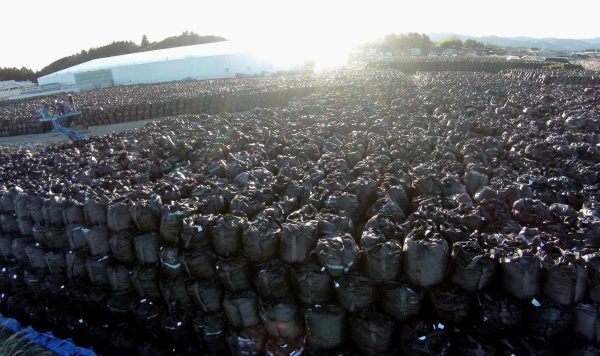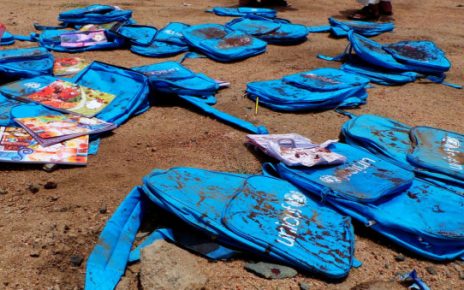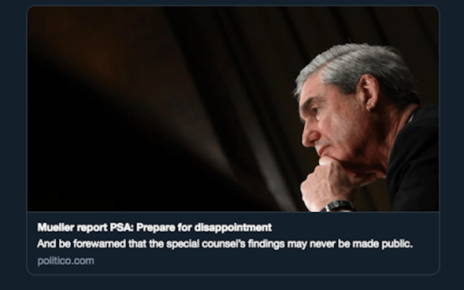Passing the 5 year anniversary mark in March of this year, it is increasingly peculiar and frustrating to see the Fukushima-Daiichi disaster still raging on, while the confusion surrounding the particulars of the situation continue to remain shrouded in hear-say and half-truths. Not surprisingly, a great deal of this confusion has stemmed from media propaganda, of both the western and eastern variety–in this case, the common denominator being government/nuclear regulation. As any country’s nuclear programs are inherently wed with their military and governmental structures, whether they publicize this or not, Japanese officials have remained disappointingly adamant about the shifting of blame, dodging of regulations, and an encompassing black-balling of Fukushima radiation updates in Mainstream Media in order to avoid “radiation hysteria” of the masses, often coined “radiophobia” to give it a certain presence of deniability..
Fortunately, some ardent and empirical investigation done into the matter does reveal certain fundamental conclusions that can be drawn from this continuous disaster. However, the news is entirely unfortunate, and unpleasant. As much as The Last American Vagabond would rather steer away from “Alarmist Reporting,” by focusing on solutions and the positive aspects of the activist Truth Movement, some realities are just downright gritty, and those seeking to avoid the yin of this yang are simply not yet ready to investigate the deeper aspects of their physical reality.
With this in mind, let’s discuss some of the research done into the accumulative affects of Fukushima radiation.
A video posted in an article by NaturalNews.com shared the Japanese-broadcast half hour documentary on “Labornet TV.” The channel is labeled “Open Channel” in the video, and so this can presumably be considered a sort of public access activist broadcast of a forum, but since the entire video is steeped in Japanese, with entirely Japanese sources, it shrouds a certain amount of the particulars with its cultural barriers of language, in terms of understanding all the sources. However, the video itself is completely fitted with English subtitles, and provides an excellent starting point for those researchers trying to get an unfiltered update of the Fukushima disaster.
The video details many personal accounts given by Japanese researchers and health practitioners such as nurses, and affected victims as well. As a brief analysis, what can be taken from the video is a sky-rocketing rate of still-births, abortions due to “inconvenient pregnancies” of severe deformations, and even children being born with extra limbs. In terms of both health effects and social effects that Fukushima has had on Japan, it is becomingly increasingly comparative to nuclear catastrophes of their history such as Hiroshima and Nagasaki, in degrees. But perhaps a more accurate equation would be the Japanese government’s textbook cover-up of the overall extent of the disaster, just like in classical nuclear catastrophes like Chernobyl, Three-Mile Island in Pennsylvania, the current and continuous nuclear leaking happening at Indian Point, New York, and the recent nuclear leaking from Turkey Point in Miamai, Florida. While government officials continue to openly and knowingly contaminate the earth and its inhabitants with unseemly levels of radiation, they continue to deny it with equal vigor.
In Japan, nuclear engineer-turned-political-activist, Koide Hiroaki, has taken a public stance calling for the total recall and abolition of Japanese nuclear energy–which is admittedly an up-hill battle if there ever was one. Taken from an interview with Hiroaki done by CounterPunch.org:
“Let’s start with the scale of the accident: It was a core meltdown involving the release of various kinds of radioactive material. Radioactive noble gas isotopes were also released, as were iodine, caesium, strontium, and other radioactive material. The noble gas isotopes have a short half-life and so at this stage they are all gone. Iodine, too, is gone. So now four years since the accident the materials that are still a problem are cesium-137, strontium-90, and tritium; really, it’s these three.
“Now, as for the scale of the accident, I think it would be best to compare these three radionuclides. Today the main contamination of Japanese soil is the radionuclide cesium-137 [Cs-137 or 137Cs]. The ocean is largely contaminated with strontium-90 [Sr-90 or 90Sr] and tritium [T or 3H]. Right now the main culprit adding to the exposure of the people in Japan is Cs-137, so I think it’s best to use Cs-137 as a standard for measuring the scale of the accident. But we simply don’t know with any precision how much Cs-137 was released. That’s because all the measuring equipment was destroyed at the time of the accident. How much Cs-137 was released into the air? How much was spilled in the sea? We just don’t know.
“Still, the Japanese government has reported estimates to the IAEA [International Atomic Energy Agency]. According to those estimated levels, reactors 1, 2, and 3 had been in operation on March 11, 2011, and all three suffered meltdowns. Those three reactors released 1.5×1016 Becquerels of Cs-137, which would make it a release of 168 times more radioactive material than the Hiroshima bombing. And this is only material released into the atmosphere-at least according to Japanese government estimates.
“But I myself think the government’s numbers are an underestimate. Various experts and institutes from around the world have offered several of their own estimates. There are those that are lower than the Japanese government’s numbers and those that are higher, some two or three times higher than the government’s numbers. According to these other estimates I think that the release of Cs-137 into the atmosphere could be around 500 times the Hiroshima bombing.
“Now for what has been washed into the sea. That number is likely not much different from the levels released into the atmosphere. Even today we are unable to prevent this release. And so if we combine the amount of Cs-137 released in the air and the ocean together, we get an estimate several hundred times the Hiroshima levels. And some estimates suggest the Fukushima accident could be as much as one-thousand Hiroshimas.
“Now to compare this with other accidents: The amount released into the atmosphere from the explosion during the accident at the Chernobyl nuclear plant was 800 to 1000 times the Hiroshima levels. Put simply, these estimates place Fukushima on par with Chernobyl.
“Worse than any of these, however, is atmospheric testing. From the 1950s to the 1960s atmospheric testing of nuclear weapons had already released Cs-137 into the air more than sixty times the numbers released even by the Japanese government for Fukushima. Of course Fukushima is an incredible tragedy, but considered from the earth as a whole it is a rather small accident…”
The entire interview is recommended reading.
Taking a step back from effects for a moment, to discuss some of the more fundamentally ecological ramifications, a brief but outstanding example has been produced by Dr. Timothy Mousseau and his research team at South Carolina. Conducting a series of census tests on the local bird populations of the contaminated areas.
Quoting the University of South Carolina’s website on the matter:
“Since a few months after the March 11, 2011, earthquake, tsunami and subsequent nuclear catastrophe at Japan’s Fukushima-Daiichi nuclear power plant, Mousseau and several co-workers have undertaken a series of bird censuses in contaminated areas. They recently published a paper in the Journal of Ornithology showing results from the first three years of the effort for 57 bird species.
“Many populations were found to have diminished in number as a result of the accident, with several species suffering dramatic declines. One hard-hit species was the barn swallow, Hirundo rustica, which suffered large population losses in a dose-dependent manner according to individually measured levels of radiation exposure…
“ ‘We were working with a relatively small range of background exposures in this study because we weren’t able to get into the ‘hottest’ areas that first summer after the disaster, and we were only able to get to some ‘medium-hot’ areas the following summer,’ Mousseau says. ‘So we had relatively little statistical power to detect those kinds of relationships, especially when you combine that with the fact that there are so few barn swallows left. We know that there were hundreds in a given area before the disaster, and just a couple of years later we’re only able to find a few dozen left. The declines have been really dramatic.’ “
As a final consideration in analysis of the effects of Fukushima, the aforementioned social conditions that it has created in Japan is of interesting note, and is something that is usually not commented on in the media. Of historical note is the discrimination that the surviving victims of the nuclear blasts of Hiroshima and Nagasaki received, and how this parallels with today’s survivors of Fukushima. Not only were these surviving victims often dealing with their own symptoms from the atomic bombs, but victimized as well by the pervasive cultural discrimination projected onto them by their community for their “contamination” and “impurity.” Many of these people were denied jobs and other social opportunities, often becoming completely segregated to slum villages of contaminated survivors.
Today, Fukushima victims are receiving a similar sort of discrimination. While reports coming in are often mean-spirited and discriminatory against these victims, it is obviously quite understandable for the Japanese to have their own concerns about who might be a walking nuclear emitter of some variety. What this ultimately lays blame upon are the public officials for not only failing to give accurate information to their citizens, but failing to account for the vast array of victims to the disaster. An insightful article done by Activist Post last year can be read for more information.
(To wrap this all up, here is an article by GlobalResearch.ca entitled “28 Signs that the West Coast is Being Absolutely Fried with Nuclear Radiation from Fukushima“)
This is not meant to be taken as a doomsday statement by any means, and none of the information in this article should be taken as such. Rather, it should be taken as a bold-typed, exclamatory statement that more public attention needs to be drawn to Fukushima, and that human society has by no means earned any relief from this subject. While there may be many people who just “don’t want to think about it” because “there’s nothing I can do,” this needs to be considered as a sociocultural obstacle of the Self that must be overcome if this continuing disaster is ever going to see some sort of resolution.
Fukushima doesn’t mean the rot of the earth from the outside in, nor does it mean guaranteed cancer for the upcoming generations of the globe, but the realistic implications that can be drawn from this are as such: Background radiation levels are increasing by varying degrees across the globe since the Fukushima disaster, and local ecological life from Asia to the North American West Coast and beyond are bearing clear and scientifically documented adverse effects to radiation contamination. Perhaps as a conclusive, yet nuanced final statement that can thus far be drawn from Fukushima is that it is not the end of life or pleasant life for that matter, but it is a fairly radical alteration to the overall ecosystem of the entire Earth, for better or (increasingly) worse.
Sources: http://www.sc.edu/uofsc/posts/2015/04_tim_mousseau_fukushima_birds.php#.V3lkQfkrKxk, http://www.counterpunch.org/2016/04/12/fukushima-five-years-after-health-researchers-turn-blind-eye-to-casualties/, http://www.counterpunch.org/2016/04/19/an-insiders-expose-of-the-fukushima-nuclear-disaster/, http://www.counterpunch.org/2015/10/23/fukushima-the-first-cancers-emerge/, https://nuclear-news.net/2015/12/12/why-japans-government-and-media-keep-the-silence-on-fukushima-radiation-effects/, http://www.activistpost.com/2015/12/the-taboo-of-radiation-exposure-in-japan-the-social-effects-of-fukushima.html, http://enenews.com/tv-surge-babies-being-born-extra-body-parts-after-fukushima-feel-officials-radiation-nurse-many-getting-abortions-avoid-inconvinient-babies-high-number-stillbirths-many-people-reporting-ca?utm_source=feedburner&utm_medium=feed&utm_campaign=Feed%3A+ENENews+%28Energy+News%29, http://www.naturalnews.com/053731_Fukushima_radiation_birth_defects.html




